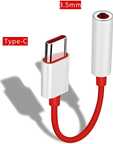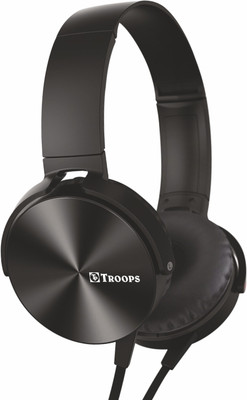
ad traders Red Type C headphone connector Phone Converter (Android)
Share
ad traders Red Type C headphone connector Phone Converter (Android)
Be the first to Review this product
₹199
₹999
80% off
Available offers
T&C
T&C
T&C
Warranty
0
Delivery
Check
Enter pincode
Delivery by5 Jul, Saturday
?
View Details
Services
- 0
- Cash on Delivery available?
Seller
CITySHOOP
(Not Enough Ratings)

Seller changed. Check for any changes in pricing and related information.
- 7 Days Return Policy?
See other sellers
Description
The Type-C headphone connector is a modern audio interface that utilizes the USB Type-C port for connecting headphones or other audio devices. Here’s a breakdown of its key features:
1. **Universal Port**: USB Type-C is a universal connector that supports various types of data transfer, charging, and audio. This means that Type-C headphones can be used with a wide range of devices, such as smartphones, tablets, and laptops, that feature a USB Type-C port.
2. **Digital Audio Transmission**: Unlike traditional analog headphone jacks, Type-C connectors can transmit digital audio directly. This can lead to improved sound quality and allow for advanced audio processing capabilities, like enhanced surround sound or noise cancellation, depending on the hardware and software support.
3. **Power Delivery**: The USB Type-C standard supports power delivery, which means it can provide power to connected devices. For headphones, this can be useful for features like active noise cancellation or integrated amplifiers, as it allows the headphones to be powered directly from the device.
4. **Versatility**: The Type-C connector is reversible, meaning it can be plugged in either way, making it more convenient to use compared to older USB connectors.
5. **Reduced Port Count**: By using the USB Type-C port for headphones, manufacturers can reduce the number of ports on devices, which helps in making them slimmer and more water-resistant.
6. **Compatibility**: While Type-C headphones are compatible with devices that have a USB Type-C port, users need to ensure their devices support audio over USB Type-C. Some devices may require an adapter for traditional 3.5mm headphones.
Overall, the Type-C headphone connector represents a shift towards a more streamlined and versatile approach to audio connectivity, leveraging the capabilities of modern USB technology.
Read More
Specifications
In The Box
| Sales Package |
|
| Number of Contents in Sales Package |
|
General
| OS Supported |
|
| Suitable Device |
|
| Purpose |
|
| Type |
|
| Syncing Method |
|
| Talk Time |
|
| Standby Time |
|
| Power Source |
|
| Battery Capacity |
|
| Net Quantity |
|
Network & Connectivity
| SIM Slot |
|
| Connectivity to Device |
|
| Supported Networks |
|
| Network Band |
|
| Quad Band |
|
| Band Operating Frequency |
|
Additional Features
| Requirements |
|
| Other Features |
|
Dimensions
| Width |
|
| Height |
|
| Depth |
|
| Weight |
|
| Other Dimensions |
|
Warranty
|
Be the first to ask about this product
Safe and Secure Payments.Easy returns.100% Authentic products.
Back to top












